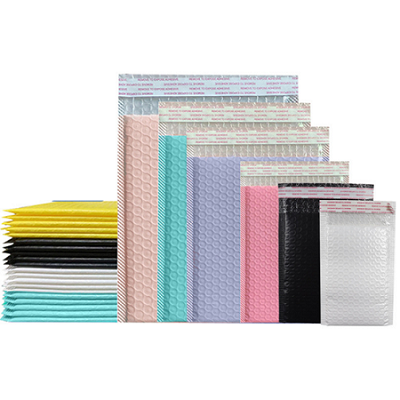What Are Plastic Packaging Bags and Why Are They Widely Used?
2025-07-09
Plastic packaging bags are flexible containers made from various types of plastic materials designed to protect, store, and transport goods. Their versatility, durability, and cost-effectiveness make them one of the most popular packaging solutions across industries ranging from food to retail and industrial applications.
What Are the Key Features of Plastic Packaging Bags?
Lightweight and Flexible:Easy to handle and adaptable to different shapes and sizes.
Durability:Resistant to moisture, dust, and contaminants, preserving product quality.
Transparency:Many plastic bags offer clear visibility of contents, aiding display and inspection.
Customization:Available in various sizes, thicknesses, colors, and printing options.
Sealable:Can be heat-sealed, zip-locked, or resealed to maintain freshness and security.
Cost-Effective:Economical for mass production and distribution.
Recyclability:Some bags are made from recyclable or biodegradable plastics to reduce environmental impact.

What Types of Plastic Packaging Bags Are Common?
Polyethylene (PE) Bags:Widely used due to low cost and versatility.
Polypropylene (PP) Bags:Offer higher clarity and strength.
Laminated Bags:Multiple layers for enhanced barrier properties.
Zip Lock Bags:Resealable bags for convenience.
Stand-up Pouches:Self-supporting bags ideal for retail display.
Vacuum Bags:Used for preserving food by removing air.
Shrink Bags:Tighten around products when heated for a secure fit.
What Are the Advantages of Using Plastic Packaging Bags?
Protection:Safeguard products from physical damage and environmental factors.
Extended Shelf Life:Barrier properties help keep food and other perishables fresh.
Branding and Marketing:Custom printing enhances brand visibility.
Convenience:Lightweight and easy to transport.
Versatility:Suitable for a wide range of products, from food to industrial parts.
Where Are Plastic Packaging Bags Commonly Used?
Food Industry:Snacks, fresh produce, frozen foods, and beverages.
Retail:Clothing, accessories, and consumer goods packaging.
Pharmaceuticals:Safe and hygienic packaging for medicines.
Industrial:Protecting parts, tools, and hardware.
Agriculture:Seed, fertilizer, and chemical packaging.
How to Choose the Right Plastic Packaging Bag?
Consider the following:
1. Material Type:Match with product requirements and regulatory standards.
2. Thickness and Strength:Ensure durability for handling and transportation.
3. Barrier Properties:For moisture, oxygen, and odor control.
4. Size and Shape:Fit the product dimensions and packaging line capabilities.
5. Printing and Branding Needs:Quality and color requirements.
6. Environmental Impact:Choose recyclable or biodegradable options if sustainability is a priority.
Conclusion
Plastic packaging bags offer a practical, versatile, and cost-effective solution for protecting and presenting products across many industries. By selecting the right materials and designs, businesses can enhance product safety, brand appeal, and customer satisfaction.


